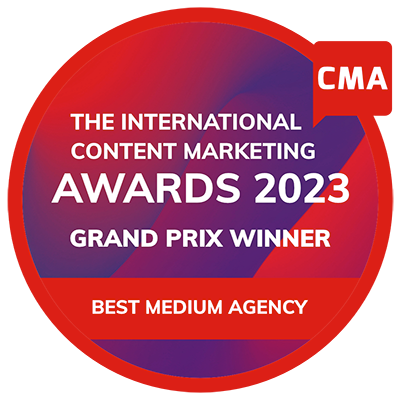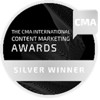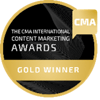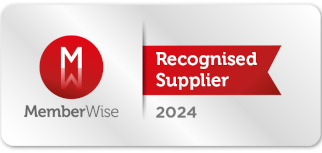
Top tips to boost your email marketing strategy
Mary Munford,
-
DOWNLOAD
Your Content Marketing Checklist >
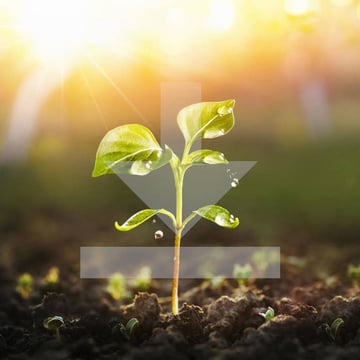
-
REQUEST TODAY
A Content Consultation >

An effective email marketing strategy is a vital component of any digital and content marketing approach. It plays a unique role in the mix, vital for return business, repeat sales and engendering loyalty with your audiences, be that B2C or B2B – not to mention being a highly efficient way of communicating with anyone within your network.
Despite the rise and rise of social media platforms, email remains hugely popular, as Statista highlights:
“In 2018, approximately 281 billion e-mails were sent and received every day worldwide. This figure is projected to increase to over 347 billion daily e-mails in 2023.”
What does this mean for email marketing?
The near-universal use of email makes it an ideal item in the digital marketing toolkit. And using an email newsletter can be a highly cost-effective way to help brands and organisations to:
- Promote their brand
- Reach out to and connect with existing audiences
- Convert interest into sales
- Develop long-term relationships with customers and win their loyalty
How effective are email newsletters?
The figures suggest that email newsletters and other email marketing definitely punch above their weight.
According to the UK-based Data and Marketing Association’s latest Marketer Email Tracker, marketers estimate that email marketing pays for itself many times over, with an average return on investment of £35.41 for every £1 spent – with even bigger benefits for some types of business.
“Large businesses are more likely to see higher returns (£44.08)… Consumer-facing brands (B2C) are slightly more likely to see a higher return on their investment (£38.24).”
Hubspot is a customer relationship management platform, encompassing email and it has figures to back up this thinking…
- 73 per cent of millennials prefer communications from businesses to come via email.
- 80 per cent of business professionals believe that email marketing increases customer retention.
- 73 per cent of millennials prefer communications from businesses to come via email.
- 59 per cent of respondents say marketing emails influence their purchase decisions.
Email marketing tip: To maximise the effectiveness of your email newsletter, clarify your goal and your audience from the outset. Whether your email newsletter’s focus is to keep in touch with individual customers, promote your products to retailers or drive traffic to your website, your email newsletter needs to align to your overall marketing strategy.
How often and when should I send an email newsletter?
Shopify is an e-commerce platform used by more than one million businesses worldwide. All its service plans include email marketing tools to help brands share updates and its best practice email marketing guide suggests there is a delicate balance to be struck between too much and not enough.
“Keep your subscribers engaged by emailing them at least once a month. Be careful not to communicate too often with your customers because this can cause them to lose interest.”
Email marketing is an integral part of the Dialogue approach in helping our clients which include both commercial brands and membership organisations. One of our clients is the British Motorcyclists Federation (BMF), for which we produce a fortnightly e-newsletter. Monitoring opening rates established the best time for it to land in member’s inboxes – a useful tip for your own newsletter.
Production editor Mike Waters explains:
“We usually send on Thursday evenings. After experimentation, we found this slot offered the best combination of open rates and practicality with client oversight, thanks to their weekly management team meetings on Wednesdays. But finding the optimum time will vary from client to client.”
For another Dialogue client, the Association of Costs Lawyers (ACL), the frequency is weekly. The email newsletter contains links to three news items on the ACL website, together with usually up to two adverts, and the frequency clearly suits the newsletter’s audience.
Mike adds: “We know the opening rate of is unusually high – routinely 50 to 60 per cent or even better.”
Email marketing tip: According to Hubspot, a good email opening rate is just under 21 per cent. Unless your recipient opens your email, there’s no chance of their clicking on a link in the newsletter (producing your click-through rate, or CTR), taking them deeper into your marketing message – though just the email simply landing in their inbox is good for brand awareness, reminding your client you exist.
You can boost the likelihood of open rates and click through by paying attention to your subject line to make it…
- Personalised
- Punchy and to the point
- Professional (avoid capitals and exclamation marks)
- Give emojis a miss – according to recent work by researchers and consultants Neilsen Norman Group: “Emojis in subject lines increase negative sentiment toward an email and do not increase the likelihood of an email being opened.”
What is the best text format/length/use of imagery?
An email newsletter needs to make an impact swiftly. According to a frequently quoted statistic from the Neilsen Norman Group:
“The average time allocated to a newsletter after opening it was only 51 seconds. Participants fully read only 19 per cent of newsletters. The predominant user behaviour was scanning. Often, users didn't even scan the entire newsletter: 35 per cent of the time, participants only skimmed a small part of the newsletter or glanced at the content.”
That research dates back several years, but today’s digital-savvy readers may be even less likely to spend valuable seconds on something that doesn’t grab and hold their attention immediately.
There’s plenty of information out there across the web about how to craft an eye-catching email newsletter. But as a starting point, pay attention to…
- Accessibility – make your newsletter easy to read. Sleek sans serif typefaces, such as Arial, and good contrast between text and backgrounds (black on white still works best) avoid distracting, or worse, irritating your reader to hold their attention longer. Using larger font sizes for headings makes it easy for recipients to quickly identify items of most interest.
- Imagery – scattering graphics or tiny, hard-to-see stock shots like confetti throughout your email newsletter can be distracting or alienating. We’re used to high-quality Instagram-style photography these days, so a strategically sparing use of larger, original images is likely to have more impact. Be careful with animations – Nielsen Norman Group research found animated GIFs are more likely to produce a negative than a positive reaction. And remember a lot email browsers will strip out visuals until the user gives them the OK.
- Ease of navigation – it needs to be easy for recipients to scroll through your email, so single column text works well. Most people will access your email newsletter via mobile and what works brilliantly on a computer screen might not look so good on a phone, so check how it looks on desktops, different smartphones and tablets before it goes to a wider audience.
- Copywriting – if recipients are spending seconds rather than minutes reading your newsletter, you need to make every word count so keep content crisp and concise. Establish and maintain a consistent tone of voice so recipients know what to expect with each newsletter. And don’t trust yourself to proofread your own content – always get someone professional to check it. Poorly written or badly spelled content can be a real turn-off and that can cost you credibility and sales.
- Getting in touch – don’t have small links too close to each other, as the wrong one might easily be clicked on a mobile screen. Keep the unsubscribe button away from where it could be clicked in error too.
How can an email newsletter benefit my business?
The Marketer Email Tracker reports that most consumers (85 per cent) do not believe that more than half the emails they receive from brands are relevant – something all creators need to be aware of.
As Lysanne Currie writes:
“Newsletters are very effective traffic drivers and they are also very effective at distributing content. But both of these goals are internal goals. What about readers’ goals?
“Newsletters are a means to an end so delve deep into what your audience needs and then find ways to add value. It will become a lot easier to find the right products to meet those needs and subsequently to increase your opening rate and CTR.”
In a fast-moving world, your email newsletter can’t stand still. It needs to justify the valuable time it takes for recipients to open and scan (or read) it so your goal is to provide relevance to users, time after time. It pays to understand your customers or members:
- Looking at your business or organisation from a customer or member perspective
- Making use of market research and other data
- Finding out what they think – for example through customer surveys, consumer reviews and social media comments
Making sure there is content that is relevant on a dependable, regular basis means that even if a reader receives one that doesn’t interest them, you will already have built up a strong enough relationship to keep them subscribed.
Get your email newsletter right and it can have a knock-on benefit for your business or organisation, as Dialogue client the BMF has found.
Production editor Mike Waters says:
“One of the most interesting things about the BMF e-newsletter is the lasting positive effect that it has had on the BMF’s other communications. After we launched the e-newsletter, the average daily opening rates for the BMF website at bmf.co.uk rose and stayed noticeably higher than they had been before.
“The e-newsletter actively brings content on the website to peoples’ attention on a regular basis, but now more people seek it of their own accord on the days between e-newsletters too. There has also been growth in social media activity on multiple channels as well – more people reading the news means more people wanting to discuss or share it.
“As a rule of thumb, the BMF website’s hit count at least doubles its usual average or better on days when an e-newsletter drops. The following day often sees more activity too as people either open the e-newsletter later or share links with others.”
Read more insightful articles
See more from the blogContent marketing – are you taking a sustainable approach?
The changing face of the luxury consumer
Evaluating the success of your email strategy
How to create a digital magazine
Proud to be a winner of industry awards, recognised as content marketing experts in print and digital media.
